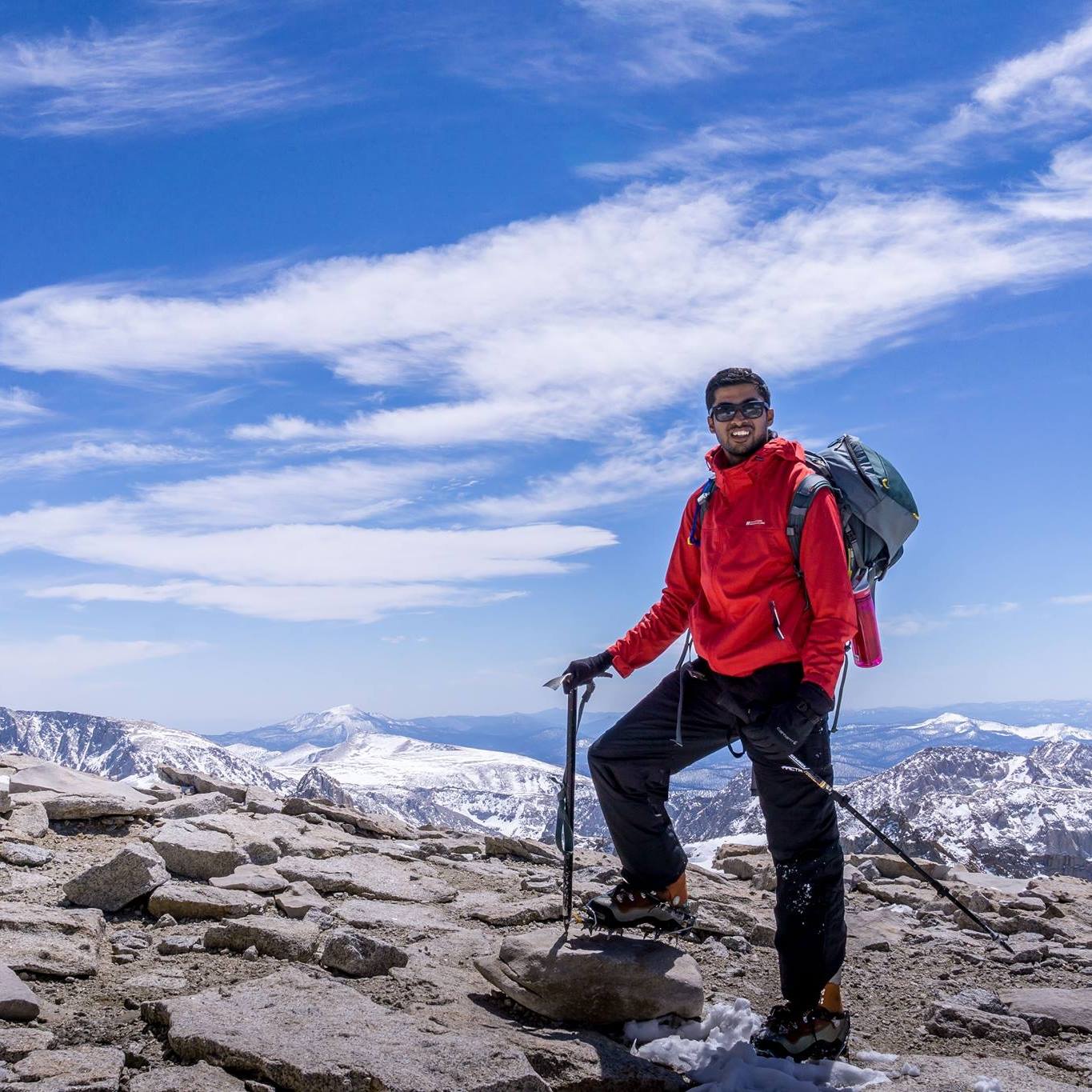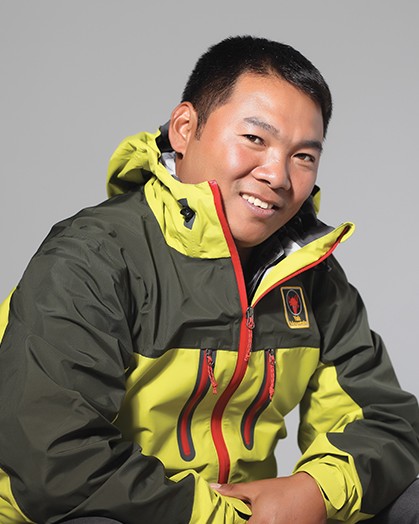Even as search and rescue (SAR) efforts to find missing Singaporean-Indian climber Shrinivas Sainis Dattatraya are reportedly ongoing on the slopes of Mt Everest, the Change.org signature campaign launched in support has been withdrawn, less than a thousand signatures shy of reaching its stated target of 35,000. According to a report in the Nepalese daily The Himalayan Times, an aerial search organised by Shrinivas’ family is set to begin anytime now.
Connected to India delved into the details of how Shrinivas Sainis Dattatraya could possibly have “fallen” down the mountainside and whether there was a Sherpa close at hand to help him during his descent — he was extremely ill from a high-altitude sickness that can make one very disoriented, but he would still be attached to a fixed rope, and falling would not be possible unless he was unclicked from the rope somehow.
When asked about the Sherpa assistance for the very unwell Shrinivas and other general questions about the modalities of SAR operations in cases like this, the Kathmandu-based expedition orgniser, Seven Summit Treks, which took Shrinivas up to Mt Everest, said that the company would only provide information to the family and Nepal Tourism Department and refused to talk even about the group that Shrinivas went with.
The Seven Summit Treks representative, who identified himself as a manager named Thanis, became agitated when we asked why, or if, a Sherpa was not close to Shrinivas just before he disappeared. The company representative said that Shrinivas, as a foreigner (that is, a person not from Nepal), would have purchased his own rescue insurance, but he refused to say what the provisions of that insurance package were, and what kind of SAR recources could be allocated under that policy.
He did say that a climber had the option of buying several kinds of expedition packages, going up to VVIP services; what kind of services a climber got would depend on what the climber would choose to pay. We asked for more clarification on the kind of high-altitude evacuation insurance the missing climber had, but Seven Summit Treks would not confirm if they even saw the proof of rescue insurance, saying that it was confidential for now.
Though Seven Summit Treks deflected almost all the questions related to this missing climber case, Yuvraj Khatiwada, Expedition Director, Nepal Tourism Department, said that Shrinivas Sainis Dattatraya was the only climber missing from that particular group. He told this website, “Whether a climber is dead or missing, SAR in Nepalese mountaineering is one of the core duties of the expedition agencies under the Nepalese legal system. The concerned agency is liable in this case.”
The SAR operations that began after Shrinivas went missing sometime last Friday (or just past Saturday midnight) were clearly not as comprehensive as his family could have hoped for, which is the reason they started the petition to mobilise a bigger operation, appealing to any and all of the government authorities that could help by cutting through the red tape. But the petition was closed before it met its signature goal, and the last update from the petition organiser, which was a day ago, said that they were ending the petition as there had been no positive outcome.
The same day, Indian-American producer-composer Aditya Prakash, a close friend of the family and frequent Carnatic music collaborator with Shrinivas’ wife, noted vocalist Sushma Soma, posted a message on Instagram requesting time for them to directly report the SAR findings and privacy for the family.
Connected to India (C to I) spoke with several expedition operators and mountaineering instructors in India, who have been on Everest expeditions themselves. They stated that for SAR operations, the families of the missing climbers should make inquiries through official channels and the authorities, rather than only communicating with the local expedition operators. One expert suggested that, in this case, Shrinivas’ family members should approach the Singapore High Commission, the Nepal government, and file a missing persons’ report with the Nepal tourist police.
C to I’s request with the Singapore High Commission in New Delhi (the closest HC in the region) is still pending, and the Nepal tourist police redirected us to the Ministry of Tourism. Khatiwada, the senior official from Nepal tourism, told this website that the Singapore High Commission in New Delhi had not approached the Tourism Department directly. “As far as I know, they are in contact with the Ministry of Foreign Affairs. They requested cooperation regarding organising a helicopter for SAR; we have sent a recommendation letter to the Civil Aviation Authority of Nepal (CAAN),” the expedition director added.
The Straits Times in Singapore had reported last week that the final contact from Shrinivas was a message to his wife saying he had reached the Everest summit. The report further stated that Shrinivas said in the message that he had high-altitude cerebral edema (HACE), a severe type of high-altitude illness that could prove fatal, and was not likely to make it back down.
The same story carried information from Prakash Chandra Devkota, the owner of Nepal Guide Treks and Expedition, as well as photos supposedly showing Shrinivas on the summit.
When Connected to India contacted Devkota, instead of responding to questions, he — or someone else — kept repeating two or three statements in the same tone and using exactly the same words multiple times; it was as if he was reading a prepared statement or playing recorded audio clips.
“The SAR operation is still going on on the Nepali side; I don’t know anything more about it,” he stated again and again, even when asked different questions about the composition of the climbing group, their equipment and schedule and Shrinivas’ rescue insurance or even whether the SAR efforts were organised by the Nepali government or private companies.
He did seem to confirm that the Sherpas for the expedition were hired through his company and that Seven Summit Treks organised the logistics of Shrinivas’ Everest ascent.
Seven Summit Treks, while refusing to provide any information to the media, cited “earlier miscommunications” and requests from the family that all details about the expedition be provided through the Nepali authorities. “You can call the Tourism Department of Nepal; they have all the information and they will release all updates,” Thanis told Connected to India.
He also said that he had talked with Shrinivas’ wife and met his brother, stating that communications with the family “were working well”, but refused to share any other information. “You need to understand, we are just the middle person; the family is on one side and the government is on the other,” he said.
The Shrinivas Sainis Dattatraya disappearance case is now not about him alone; it has also become part of a bigger story, as climbers in general need to know what kind of backup and safety protocol they can expect in an emergency on the highest mountain in the world. Veteran mountaineers have complained that budget companies have flooded the market in the past decade in Nepal, leading to a drop in safety and other standards.
C to I’s independent research revealed that this is not the first time that Seven Summit Treks has been involved in a controversy.
Established by brothers Mingma Sherpa, Chhang Dawa Sherpa, Tashi Lakpa Sherpa and Pasang Phurba Sherpa in 2010, by 2019 the operator was recognised and recorded as the largest royalty/tax paying firm in Nepal, having organised the highest numbers of climbing expeditions across the Nepal Himalayas, according to a Himalayan Times report.
Maritha Strydom, the mother of Maria Strydom, an Australian climber who died while climbing Mount Everest in the 2016 season, had on Facebook criticised Seven Summit Treks for not informing her of her daughter's death in a timely fashion.
“We saw through the Himalayan Times a post that my daughter died. Pemba Sherpa was called several times, he didn't want to help at all…We never had any, but any, contact from anyone from your company, now, almost 48 hours after my daughter’s death,” an Australian Broadcasting Corporation report quoted her as saying, in response to expedition leader Arnold Coster’s post on the tragic events.
In 2021, the Nepal government fined Seven Summit Treks’ registered Sherpa guide Dawa Sherpa SGD 102 (NPR 10,000) for being complicit in three Indian climbers’ false claim to have summited Mount Everest in 2016.
In 2018, The Himalayan Times reported that the Nepalese Ministry of Culture, Tourism and Civil Aviation fined Seven Summit Treks SGD 59,400 (USD 44,000) for taking two climbers to Mt Everest without obtaining the proper climbing permits. The Department of Tourism (DoT) also collected SGD 510 (NPR 50,000) more from the agency as a penalty for fraud.
Mingma Sherpa, the owner of Seven Summit Treks, denied any wrongdoing and claimed that a former employee was responsible for forging a permit to include the names of two extra climbers in an expedition.




